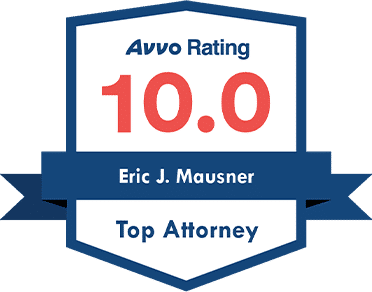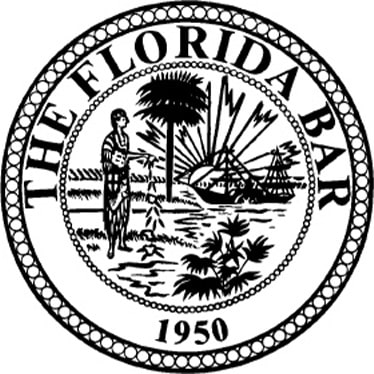At MG Injury Firm, we understand that a car accident case’s “worth” involves much more than just medical bills or car repairs, it’s about recovering your peace of mind. Your total compensation includes economic damages (medical bills, lost wages, property damage) and non-economic damages (pain and suffering, emotional distress). This guide explains how Miami and Florida law shape those calculations, walks through the main factors that drive value, and shows practical example ranges so you can form realistic expectations. If you want immediate help understanding a specific claim, Mausner Graham Injury Law offers a free, confidential case review and handles cases on a contingency fee basis; founding partners include former prosecutors licensed in Florida and other jurisdictions, which can matter when complex negotiation or litigation is needed.
Many readers struggle to estimate future medical needs or quantify pain and suffering; this article explains legal mechanics, evidence priorities, and negotiation strategies that influence settlements. You’ll find sections on the key settlement factors, Florida’s no-fault/PIP framework and lawsuit thresholds, calculating economic and non-economic damages, how attorneys maximize recovery, average Miami settlement ranges with anonymized examples, and clear answers to common questions using local context and recent trends.
What Are the Key Factors Affecting Miami Car Accident Settlement Amounts?
 This section defines the core variables that determine settlement value, explains why each matters, and outlines how they interact to affect final compensation amounts. Injury severity drives the multiplier for non-economic damages and the scale of future care, while medical expenses form the numeric baseline for economic losses. Liability allocation and insurance coverage create legal and practical caps on what a claimant can recover, and lost earnings plus diminished earning capacity translate life disruption into financial terms. Understanding these elements helps you prioritize evidence collection and claim strategy, which we address in following subsections. MG Injury Firm offers free consultations to help Miami residents understand the potential value of their injury claims, backed by former prosecutors and trial-ready attorneys.
This section defines the core variables that determine settlement value, explains why each matters, and outlines how they interact to affect final compensation amounts. Injury severity drives the multiplier for non-economic damages and the scale of future care, while medical expenses form the numeric baseline for economic losses. Liability allocation and insurance coverage create legal and practical caps on what a claimant can recover, and lost earnings plus diminished earning capacity translate life disruption into financial terms. Understanding these elements helps you prioritize evidence collection and claim strategy, which we address in following subsections. MG Injury Firm offers free consultations to help Miami residents understand the potential value of their injury claims, backed by former prosecutors and trial-ready attorneys.
How Does Injury Severity Influence Your Settlement Value?
Injury severity is the primary determiner of case worth because more severe injuries typically require longer treatment, produce larger medical bills, and justify higher pain-and-suffering awards. Minor soft-tissue injuries like acute sprains often settle for lower amounts because treatment is brief and long-term prognosis is good, whereas catastrophic injuries—spinal cord injuries or traumatic brain injuries—create measurable lifetime care needs and lost earning capacity. Documented permanency, surgical interventions, and objective findings on imaging significantly increase valuation. Clear medical records and early specialist evaluations help shift a case from a low to a moderate-or-high valuation by linking symptoms to diagnosis and projected care.
What Role Do Medical Expenses Play in Calculating Compensation?
Medical expenses form the concrete economic baseline from which other damages are modeled; they include emergency care, hospital stays, diagnostic imaging, surgeries, rehabilitation, and durable medical equipment. Insurers and courts use billed amounts, accepted insurance adjustments, and documented future care plans to estimate both past and projected medical costs. When future treatment is likely, life-care plans or expert testimony quantify ongoing needs, which are then discounted to present value for settlement calculations. Accurate medical billing, retention of itemized statements, and addressing liens or write-offs are essential to prove the true economic burden caused by the crash.
How Are Lost Wages and Earning Capacity Considered in Settlements?
Lost wages compensate for time missed from work and are calculated from pay stubs, employer statements, and tax records; they represent a recoverable past economic loss directly tied to the injury. Future lost earning capacity requires projecting career trajectory, accounting for age, occupation, and diminished ability due to injury, often with vocational expert input. For self-employed or irregular wage earners, profit-and-loss statements, contracts, and client records can demonstrate income loss. Proper documentation and expert analysis convert subjective career impact into quantifiable dollar figures that insurers must consider during negotiation.
How Is Pain and Suffering Calculated in Florida Car Accident Cases?
Pain and suffering are non-economic damages meant to compensate for physical pain, emotional distress, and diminished quality of life; they lack fixed dollar amounts and are typically calculated using multiplier or per diem approaches. The multiplier method multiplies verifiable economic damages by a factor that reflects injury severity and permanence, while per diem assigns a daily rate multiplied by recovery days. Factors influencing the multiplier include treatment intensity, recovery timeline, surgical intervention, and long-term impairment. Detailed medical narratives, therapy records, and testimony about daily function are crucial to substantiate higher non-economic awards.
How Do Liability and Fault Impact Your Settlement in Miami?
Liability allocation determines who pays and to what extent, and under Florida’s modified comparative negligence rule, an injured party’s recovery is reduced by their percentage of fault and barred if more than 50% at fault. Insurers evaluate police reports, witness statements, traffic-camera footage, and expert reconstructions to assign fault; any reduction in plaintiff fault directly reduces the award by that percentage. Demonstrating absence of negligence or shifting blame to another party increases expected recovery. Preservation of scene evidence, timely witness interviews, and investigation into potential third-party liability are practical measures to protect case value.
What Effect Does Insurance Coverage Have on Your Case Worth?
Insurance coverage caps and policy types set practical ceilings on recoverable amounts because liability policy limits are the primary source of compensation for most at-fault drivers. Uninsured/underinsured motorist (UM/UIM) coverage can fill gaps when at-fault parties lack sufficient liability limits, and PIP coverage in Florida pays initial medical and wage losses regardless of fault. When policy limits are low relative to losses, claimants may need to seek other avenues such as multiple at-fault parties or UM/UIM coverage to access needed funds. Confirming available insurance limits early guides strategy on settlement demands and whether litigation or alternative compensation sources are necessary.
How Does Florida’s No-Fault Insurance Law Affect Car Accident Compensation?
Florida’s no-fault system and Personal Injury Protection (PIP) framework change the timing and pathways for recovery by requiring initial medical and wage losses to be covered by PIP, while reserving suits against tortfeasors for cases that meet serious injury thresholds. PIP provides prompt payment of emergency and immediate treatment costs, but limits early tort claims, so understanding PIP’s scope and the criteria for stepping outside no-fault is central to maximizing compensation. The following subsections explain PIP mechanics, when lawsuits are permitted, how comparative negligence interacts with no-fault, and relevant filing deadlines.
What Is Florida’s Personal Injury Protection and How Does It Work?
Personal Injury Protection (PIP) is mandatory in Florida and covers a portion of medical expenses and lost wages regardless of who caused the crash, typically paying 80% of medical expenses and 60% of lost wages up to the policy limit. PIP applies as the primary source for immediate treatment and short-term wage replacement, requiring claimants to submit appropriate medical billing and proof of earnings to obtain benefits. PIP’s prompt payment reduces immediate financial hardship, but does not cover full non-economic losses, and exhausted PIP benefits often trigger the need to evaluate whether a tort claim is available. Properly filing PIP claims and tracking payments is an essential first step after an accident.
- PIP covers a set percentage of medical costs and lost income under a policy’s limit.
- PIP applies regardless of fault, streamlining early medical access while capping immediate tort relief.
- Accurate medical coding and timely submissions are required to secure PIP payments.
Careful tracking of PIP payouts and remaining medical needs frames the next steps in a claim, especially when long-term or serious injuries suggest a tort action may be necessary.
When Can You File a Claim Beyond PIP Coverage in Florida?
You may pursue a tort claim beyond PIP when injuries meet Florida’s “serious injury” threshold, which includes significant permanent or permanent disfiguring injuries, substantial loss of important bodily functions, or certain objective, verifiable conditions. Examples that often permit suit include fractures requiring surgery, spinal cord injuries, and significant neurological deficits. When PIP benefits are exhausted or when injuries meet the statutory seriousness criteria, a claimant can seek full compensation for economic and non-economic losses from the at-fault party. Early legal evaluation helps determine whether documented injuries meet the threshold and when to initiate a tort action to protect recovery rights.
How Does Florida’s Comparative Negligence Rule Influence Settlement Amounts?
Florida follows a modified comparative negligence system in which a plaintiff’s award is reduced by their percentage of fault and barred if their fault exceeds 50 percent; mathematically, the recoverable amount equals the total damages multiplied by (1 – plaintiff’s fault percentage). For example, $100,000 in damages with 20% plaintiff fault yields $80,000 after reduction. Because small percentages of fault materially reduce net recovery, legal strategies focus on minimizing plaintiff fault through evidence, witness accounts, and legal theory. Reducing perceived fault by even a modest percentage can preserve tens of thousands of dollars in settlement value.
What Is the Statute of Limitations for Car Accident Claims in Florida?
The standard statute of limitations for most personal injury claims arising from car accidents in Florida is two years from the date of injury, which sets a firm deadline for filing suit to preserve legal rights. Certain exceptions or tolling rules may extend or alter this timeframe, such as discovery of latent injuries or claims against governmental entities that require notice within shorter windows. Missing the statute of limitations typically bars recovery entirely, so early consultation with counsel safeguards procedural rights and ensures that critical evidence and witness testimony remain available.
Get Your FREE Case Review Today
How Are Economic Damages Calculated in Miami Car Accident Cases?
Economic damages are concrete financial losses arising from an accident and are calculated by itemizing past expenses and projecting future costs using expert valuation where needed. This section lists recoverable economic categories, explains documentation best practices, and provides an EAV-style table to show examples and valuation approaches used in Miami cases. Clear records and expert input convert expenses and projected needs into persuasive figures for negotiations and litigation.
Immediate economic damages in car accident cases encompass direct medical bills, lost wages, and property damage; each item is provable through invoices, pay records, and repair estimates that insurers accept as foundational proof. Summarizing these losses creates the economic baseline that supports non-economic calculations. Below is a table mapping economic damage types to included items and example valuation methods to guide documentation.
Economic Category | What’s Included | Example Valuation Method |
Medical Expenses | ER, hospitalization, surgery, therapy, prescriptions | Itemized bills, accepted adjustments, present-value of future care using life-care plan |
Lost Income | Past wages, overtime, bonuses, self-employment losses | Pay stubs, employer verification, tax returns, profit/loss statements |
Property Damage | Vehicle repairs, total loss value, diminished value | Repair estimates, total loss formula, diminished-value appraisal |
What Medical Bills Are Included in Economic Damages?
Recoverable medical bills include emergency care, inpatient stays, surgeries, diagnostic imaging, physical therapy, prescription medications, and durable medical equipment; bills are submitted as proof of past economic loss. Future medical costs are quantified through expert life-care plans that estimate ongoing therapy, assistive devices, and potential home modifications. Insurance adjustments and write-offs complicate valuing bills, so attorneys reconcile billed amounts with accepted charges and liens to present a clear net cost. Retaining all medical records and securing expert medical opinions fosters stronger valuation of these damages.
How Is Lost Income and Future Earnings Estimated?
Past lost income is documented with pay stubs, employer letters, and tax records to show wages sacrificed due to the injury, while future earning capacity loss requires vocational analysis to project career impact. Experts consider age, occupation, education, and earning history to estimate lifetime earnings loss, often using discounted present-value calculations. For self-employed claimants, profit-and-loss statements, client contracts, and tax returns substantiate income streams. Clear documentation and expert testimony translate livelihood disruption into defensible monetary claims.
How Is Property Damage Valued in Settlement Calculations?
Property damage valuation covers repair costs, total loss calculations, and diminished vehicle value after repair; evidence includes repair estimates, insurer appraisals, and photos. For total loss, insurers use actual cash value formulas comparing pre-accident market value to salvage value, while diminished value claims quantify loss in resale price post-repair. Independent appraisals and repair invoices help substantiate these claims and prevent insurers from undervaluing physical damage. Combining repair records with market data yields credible property damage valuations for negotiation.
How Are Non-Economic Damages Like Pain and Suffering Determined in Florida?
Non-economic damages compensate for subjective harms like pain, suffering, emotional distress, and loss of enjoyment of life and are typically calculated using multiplier or per diem methods informed by injury severity. This section defines non-economic damages, explains common calculation methods, and provides an EAV-style table mapping injury types to typical multiplier ranges and illustrative outcomes. Because non-economic awards depend heavily on documentation of treatment, impairment, and life impact, qualitative records play a critical role in valuation.
Non-economic damages require translating personal harm into monetary terms via accepted legal methods; the multiplier method multiplies verified economic damages by a chosen factor, while per diem assigns a daily rate based on severity. Evidence such as consistent medical treatment, mental health records, and testimony about daily limitations supports higher valuations. The table below maps common injury types to multiplier ranges and example rationales.
Injury Type | Typical Multiplier Range | Example Rationale |
Minor soft tissue | 1.0 – 1.5 | Short treatment, full recovery expected |
Moderate injury | 1.5 – 3.0 | Surgery or prolonged rehab with partial limitations |
Severe/catastrophic | 3.0 – 8.0+ | Permanent disability, lifelong care, major lifestyle impact |
How Can a Miami Car Accident Lawyer Maximize Your Settlement Amount?
A skilled attorney increases settlement value by conducting thorough investigations, assembling persuasive demand packages, leveraging experts, and negotiating strategically with insurers while preparing for trial, when necessary. Lawyers gather accident reports, medical chronologies, witness statements, and expert analyses to build liability and damages narratives that insurers respect. Below are concrete strategies and benefits lawyers provide, including the advantages Mausner Graham Injury Law offers through former prosecutor experience and multi-state licensure, followed by a CTA for a free consultation and explanation of contingency fees.
Law firms strengthen claims by identifying additional responsible parties, securing surveillance or telematics, and commissioning life-care plans or vocational assessments that quantify losses. These investigative steps convert qualitative harm into quantifiable damages, improving settlement leverage. Mausner Graham Injury Law leverages founding partners with former prosecutor backgrounds and licensure across multiple states to approach complex negotiations and litigation with trial-tested strategy and credibility. For those ready to discuss specifics, the firm offers a free, confidential case review and handles cases on a contingency fee basis to align attorney incentives with client outcomes.
How Does Legal Investigation and Evidence Gathering Strengthen Your Case?
Investigation turns anecdote into admissible proof: accident reconstructions, traffic-camera retrievals, and witness statements establish fault, while comprehensive medical chronologies demonstrate causation and need for future care. Collecting surveillance, phone records, and repair estimates can reveal inconsistencies in insurer narratives and buttress liability theories. Experts—medical, vocational, or economic—translate clinical findings into projected costs and lifetime impacts. Strong evidence deters lowball offers and increases settlement leverage by presenting a credible trial narrative.
What Strategies Do Lawyers Use to Negotiate with Insurance Companies?
Attorneys prepare detailed demand packages with itemized damages, medical records, expert reports, and demonstrative exhibits to anchor settlement discussions at realistic values. Timing strategies include pre-suit demands, mediation, or calibrated rounds of offers to test insurer flexibility while preserving litigation options. Lawyers use comparable-case data to justify numbers and employ a mix of pressure tactics—like filing suit when needed—to improve offers. Consistent, evidence-based communication and readiness to litigate increase the probability of favorable settlements.
- Attorneys assemble comprehensive demand packets with economic and non-economic proof.
- Negotiation timing and willingness to litigate are used to extract higher offers.
- Demonstrative evidence and expert reports provide persuasive anchors for demand figures.
These negotiation strategies set the stage for deciding whether to accept an offer or proceed to trial to preserve full value.
When Is Litigation or Trial Representation Necessary?
Litigation is appropriate when offers fail to reflect case value, insurers act in bad faith, or the case involves complex liability or catastrophic injuries that require courtroom validation of long-term damages. Trial preparation includes discovery, depositions, expert designation, and pre-trial motions, creating a record that often motivates settlement at higher levels. Former prosecutors bring courtroom strategy and cross-examination skills that can be decisive in contested liability or credibility disputes. When the insurer’s lowball posture continues, filing suit preserves deadlines and signals readiness to pursue full compensation.
What Are the Benefits of Free Consultations and Contingency Fee Arrangements?
Free consultations remove barriers to early case assessment, allowing injured persons to understand legal options without up-front cost, while contingency fee arrangements ensure attorneys are paid only from recoveries, aligning incentives with client outcomes. This model reduces financial risk for claimants and motivates attorneys to maximize settlement or verdict value. A confidential review identifies potential claims, necessary evidence, and whether PIP or tort avenues apply. Choosing counsel early preserves evidence and procedural rights while keeping client costs tied to success.
Contact us today for your free & confidential case review. Our team will help you get the compensation that you deserve.
What Are the Average Car Accident Settlement Amounts in Miami and Florida?
Average settlement ranges vary widely based on injury severity, liability clarity, and available insurance limits; typical ranges for many Miami cases fall from low five figures for minor injuries to mid-six or seven figures for catastrophic cases. This section provides categorized ranges, an EAV-style table mapping injury types to typical settlement ranges and common factors, and anonymized example calculations to set expectations for what similar claims often achieve.
Settlement ranges function as guidelines rather than guarantees because case facts, medical documentation, and policy limits drive actual dollars. Below is a comparative table linking injury categories to typical settlement ranges and common factors that push values up or down.
Injury Type | Typical Settlement Range | Factors that Increase/Decrease Value |
Minor injuries (soft tissue) | $10,000 – $60,000 | Faster recovery and weak objective findings decrease value; visible treatment and imaging can increase it |
Moderate injuries (fractures, surgeries) | $60,000 – $250,000 | Surgery, prolonged rehab, and lost earnings push value higher |
Severe/catastrophic (spinal cord, TBI) | $250,000 – $1,000,000+ | Lifetime care, lost earning capacity, and high pain/suffering multipliers raise value |
What Is the Typical Settlement Range for Minor Injuries in Miami?
Minor soft-tissue injuries often settle in the $10,000 to $60,000 range when treatment is limited, objective findings are minimal, and time off work is brief. Cases that push toward the higher end typically include documented imaging, recurring symptoms requiring ongoing therapy, or temporary lost income. Prompt medical care and consistent treatment notes help validate claims and move offers upward. For many claimants, collecting medical records and employer verification of lost time improves credibility and settlement prospects.
How Much Can Severe Injuries Increase Settlement Amounts?
Severe or catastrophic injuries can raise settlements into six-figure to multi-million-dollar ranges when they cause permanent disability, require ongoing medical care, and produce significant future income loss. Future care plans, vocational and life-care experts, and demonstrable loss of function are critical to justify large amounts. Insurer willingness to offer high settlements depends on convincing proof of lifelong needs and credible expert testimony. When liability is clear and coverage adequate, settlements reflect the full magnitude of projected lifetime costs.
How Do Miami Car Accident Statistics Influence Settlement Trends?
Miami-Dade’s high crash volume and common causes—distracted driving, impaired driving, and speeding—affect claim frequency and insurer practices, often increasing claim negotiation activity and influencing local settlement norms. High local claim volumes can drive insurer specialization in handling cases quickly, sometimes encouraging lower early offers and making strong evidence and representation more valuable. Awareness of local trends helps attorneys craft strategies suited to Miami-Dade patterns and improves forecasting for settlement expectations.
What Are the Most Frequently Asked Questions About Miami Car Accident Case Worth?
This FAQ-style section gives concise, actionable answers to common user questions about average settlement amounts, influencing factors, calculation of pain and suffering, Florida’s no-fault rules, and comparative negligence, and ends with a clear next step encouraging a free case review. Each answer is focused on providing direct guidance and linking back to detailed sections above for readers who want deeper information.
How Much Is the Average Car Accident Settlement in Miami?
Many Miami cases involving minor to moderate injuries settle between $10,000 and $250,000 depending on medical costs, lost wages, and non-economic harm, while catastrophic injuries can exceed that range substantially. These figures are broad averages; precise value depends on documented damages, fault allocation, and available insurance coverage. For a tailored estimate, a confidential case review can align case facts with applicable ranges.
What Factors Affect Car Accident Settlements in Florida?
Major factors include injury severity, medical expenses and future care needs, lost wages and earning capacity, liability and fault allocation, and insurance policy limits. Each factor directly influences the baseline economic damages or the multiplier applied for non-economic losses. See the detailed sections above for guidance on evidence and valuation strategies.
- Injury severity and permanency determine multiplier selection for non-economic damages.
- Medical expenses form the concrete economic baseline for calculation.
- Liability and insurance limits cap or expand the realistic recovery pool.
Minimizing plaintiff fault and documenting injuries thoroughly increases settlement potential.
How Is Pain and Suffering Calculated in Florida Car Accidents?
Pain and suffering are often calculated using the multiplier method, economic damages multiplied by a factor, or a per diem rate multiplied by recovery days, with multiplier selection influenced by injury severity and treatment history. Thorough medical documentation and evidence of life disruption justify higher multipliers. See the non-economic damages section for examples and multiplier guidance.
What Is Florida’s No-Fault Law for Car Accidents?
Florida’s no-fault system uses PIP to cover immediate medical bills and lost wages regardless of fault, but allows tort claims when injuries meet a statutory serious-injury threshold. PIP provides early relief, but limits early sue options until thresholds are met. Consult the no-fault section above to determine whether your case qualifies for a tort claim beyond PIP benefits.
How Does Comparative Negligence Affect My Settlement?
Under Florida’s modified comparative negligence rule, your award is reduced by your percentage of fault and barred if your fault exceeds 50 percent; the recoverable amount equals total damages times (1 – your fault percentage). Reducing perceived fault through evidence and legal strategy preserves settlement value. Early legal involvement helps minimize attributions of plaintiff fault.
At MG Injury Firm, we believe every injured person deserves a clear, honest assessment of their case. That’s why we offer free, no-obligation consultations and only get paid if you do. Whether your case involves minor injuries or lifelong medical care, our team, led by former prosecutors and licensed Florida attorneys, fights relentlessly for the compensation you’re owed.
Contact MG Injury Firm today to find out what your case may be worth and take the first step toward justice and recovery.
Call Mausner Graham today
Free consultation available statewide
Offices in Miami, Doral, and Palmetto Bay
600+ 5-Star Google Reviews
Last Updated Friday, October 24th, 2025












